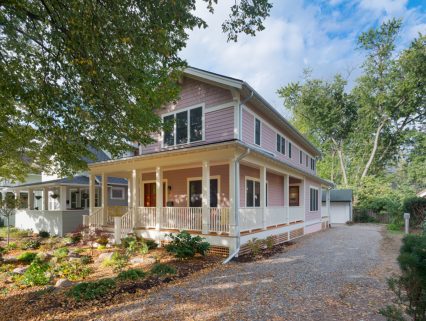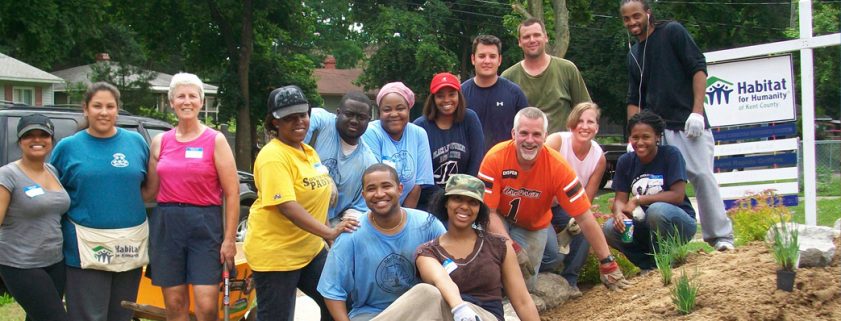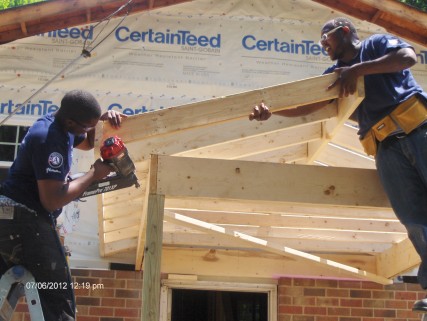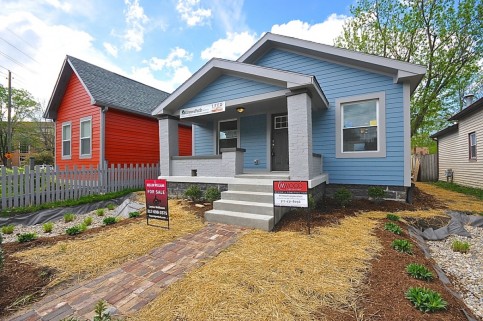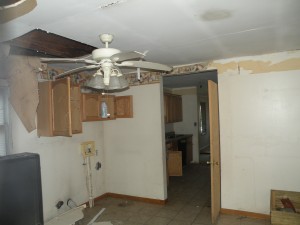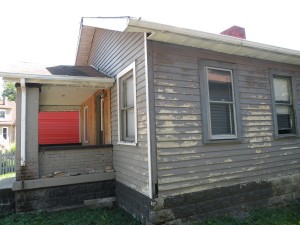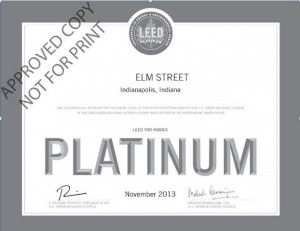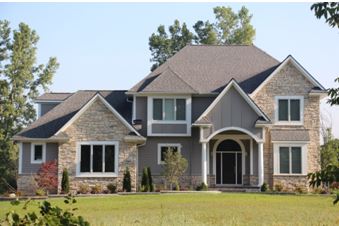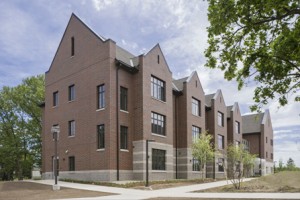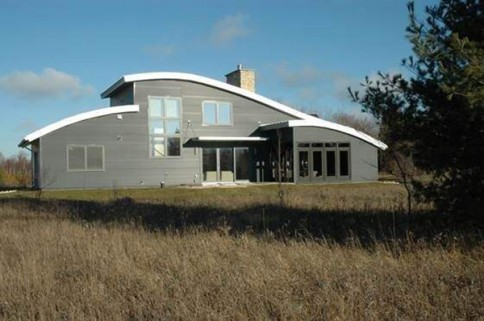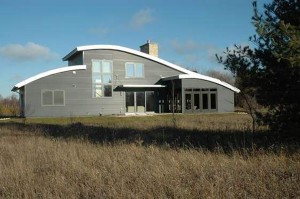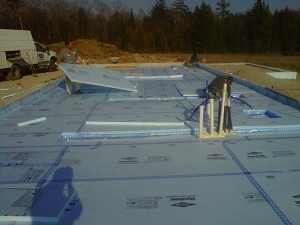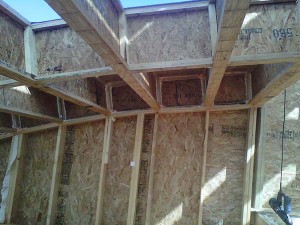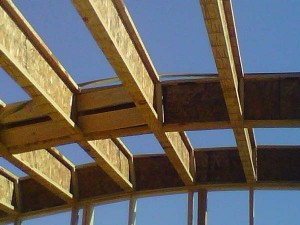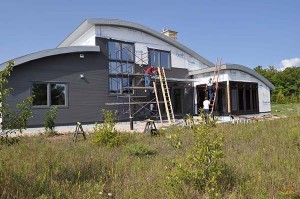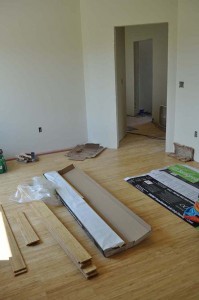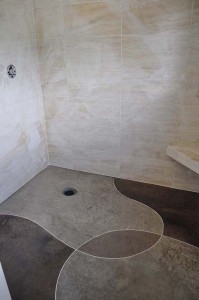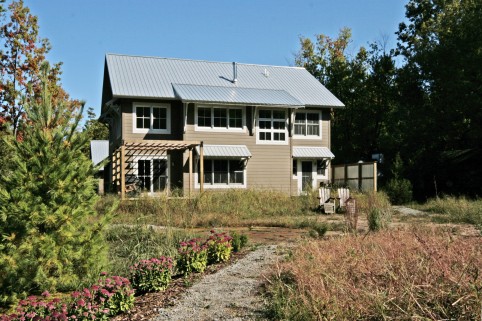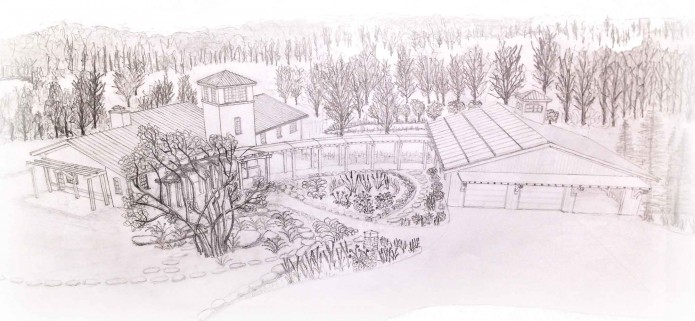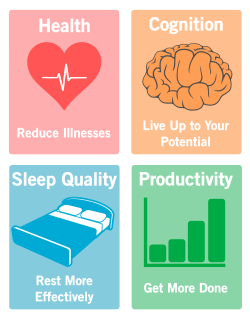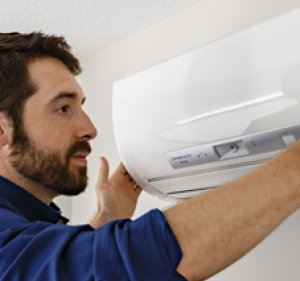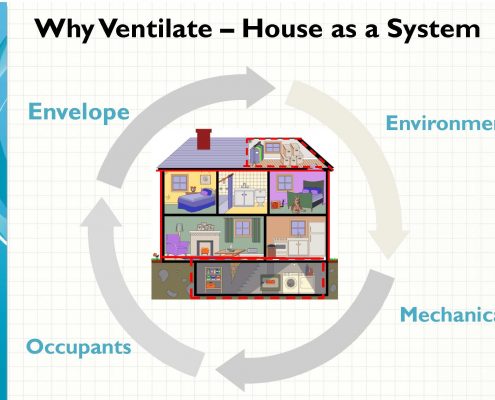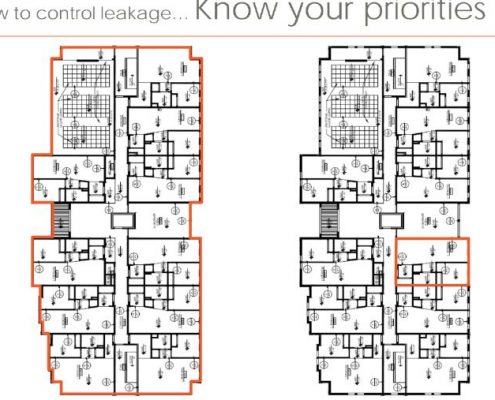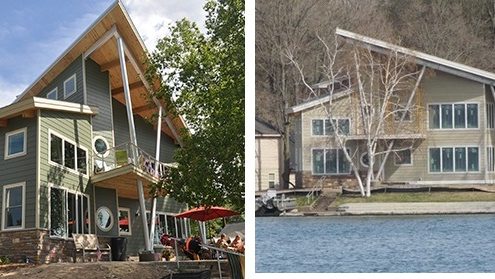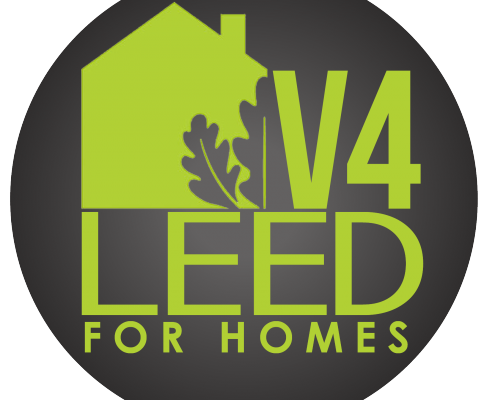Tag Archive for: leed for homes
West Michigan Organizations Awarded LEED Homes Power Builders
/0 Comments/in Certified LEED, GRGAH, Michigan/by Brett Little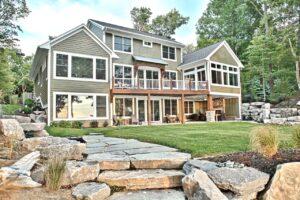 Recently two West Michigan Organizations were awarded the distinguishing “LEED Homes Power Builders Award by the USGBC (U.S. Green Building Council). Through this award and others, the USGBC recognizes projects, architects, developers and home builders who have demonstrated outstanding leadership and innovation in the residential green building marketplace.
Recently two West Michigan Organizations were awarded the distinguishing “LEED Homes Power Builders Award by the USGBC (U.S. Green Building Council). Through this award and others, the USGBC recognizes projects, architects, developers and home builders who have demonstrated outstanding leadership and innovation in the residential green building marketplace.
The “LEED Homes Power Builders,” was developed by the USGBC to honor an elite group of developers and builders who have exhibited an outstanding commitment to LEED (Leadership in Energy and Environmental Design) and the green building movement within the residential sector. In order to be considered as a Power Builder, developers and builders must have LEED-certified 90 percent of their homes/unit count built in 2015 at any LEED certification level.
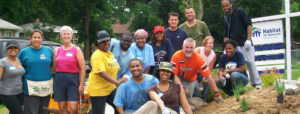 One of the great benefits of the LEED certification process is that it can apply to very different projects types. As you will see with the two organizations recognized, LEED certification has important benefits to low-income houses in urban settings to higher end homes in remote settings. Both organizations benefit from using the LEED certification process to add validation to their building efforts and to ensure the homeowner is getting a quality built efficient home.
One of the great benefits of the LEED certification process is that it can apply to very different projects types. As you will see with the two organizations recognized, LEED certification has important benefits to low-income houses in urban settings to higher end homes in remote settings. Both organizations benefit from using the LEED certification process to add validation to their building efforts and to ensure the homeowner is getting a quality built efficient home.
Cottage Home based of out Holland and Habitat for Humanity of Kent County were the two West Michigan recipients honored with the recognition of Power Builders. While they are in different segments of the development and remodeling of homes in West Michigan, both are setting the standard for sustainable building practices.
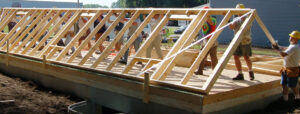 Habitat for Humanity of Kent County is on their way to completing 150 homes and counting in the Kent County/Grand Rapids area that has achieved some level of LEED Certification. Corri Sandwick Home Performance Coordinator for Habitat for Humanity of Kent County stated that the organization started seeking LEED Certifications in 2006 and by 2007 all new homes built were LEED Certified.
Habitat for Humanity of Kent County is on their way to completing 150 homes and counting in the Kent County/Grand Rapids area that has achieved some level of LEED Certification. Corri Sandwick Home Performance Coordinator for Habitat for Humanity of Kent County stated that the organization started seeking LEED Certifications in 2006 and by 2007 all new homes built were LEED Certified.
Recently, they have been one of the first builders committed to building according to the new and more stringent LEED v4 criteria even before it had been fully finalized. Sandwick said it started in partnership with Grand Rapids Community College Residential Construction Program in celebration of their 100th anniversary. The two organizations decided to try a v4 build. Once they accomplished that build, Habitat Kent decided to build all future homes to the same criteria knowing it would soon be the standard. To date, Habitat Kent has completed 10 LEED v4 certified homes.
Habitat Kent has aggressive goals in the future both related to LEED but also participates in programs such as Energy Star. Habitat Kent is also considering the benefits of getting involved in Zero Energy Ready and the EPA’s Water Sense Program. Building homes that are sustainable just make sense for Habitat Kent. It sets homeowners up for success, keeps costs down for homeowners and aligns with Habitat Kent’s partner organizations’ principles. Habitat Kent states that by being wise about green building, they include only what will be most beneficial to families. This creates a healthful environment and drastically reduces energy and water use, saving Habitat Kent homeowners thousands of dollars. For a family of four living on $30,000 a year, reducing their utility bills to an average $105 a month goes a long way in helping them be successful in their home.
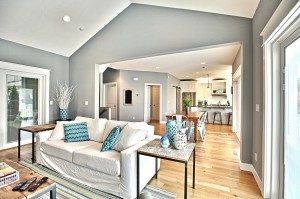 Cottage Home based out of Holland is the other recipient of this prestigious title. According to Jeremy Vaneyk construction manager, they started building based on LEED criteria in 2008 and to date have built 100 sustainable homes along the lakeshore. Vaneyk also said that 31 homes have achieved a LEED certification with 13 of those homes being Platinum certified. Building sustainably is very important to Cottage Home. Both Vaneyk along with Founder Brian Bosgraff both live in LEED Certified homes and can use their experience as builders and homeowners to help their clients. Cottage Home strongly believes it is their responsibility to build with the environment in mind. The LEED certification process provides their clients with a validation that their home is being built to some of the most stringent standards. LEED certification is one of the many tools they use to build focusing on air quality, energy efficiency and site preservation as a core foundation of the build. It is much more than a certification process to Cottage Home but more of a business philosophy.
Cottage Home based out of Holland is the other recipient of this prestigious title. According to Jeremy Vaneyk construction manager, they started building based on LEED criteria in 2008 and to date have built 100 sustainable homes along the lakeshore. Vaneyk also said that 31 homes have achieved a LEED certification with 13 of those homes being Platinum certified. Building sustainably is very important to Cottage Home. Both Vaneyk along with Founder Brian Bosgraff both live in LEED Certified homes and can use their experience as builders and homeowners to help their clients. Cottage Home strongly believes it is their responsibility to build with the environment in mind. The LEED certification process provides their clients with a validation that their home is being built to some of the most stringent standards. LEED certification is one of the many tools they use to build focusing on air quality, energy efficiency and site preservation as a core foundation of the build. It is much more than a certification process to Cottage Home but more of a business philosophy.
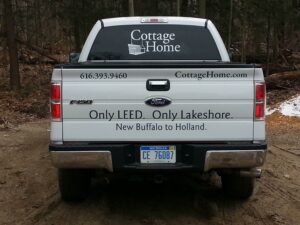 Both Cottage Home and Habitat for Humanity of Kent County are equally passionate about green building and both use the LEED Certification process to set the bar for sustainable building in West Michigan. Their business while different in many regards is also very similar in others. They both show a strong desire to build with the environment in mind and factoring in their homeowners wants and needs.
Both Cottage Home and Habitat for Humanity of Kent County are equally passionate about green building and both use the LEED Certification process to set the bar for sustainable building in West Michigan. Their business while different in many regards is also very similar in others. They both show a strong desire to build with the environment in mind and factoring in their homeowners wants and needs.
LEED has become the world’s most recognized rating system for green buildings. The LEED for Homes rating system was created as a way for single-family homes and multifamily buildings to achieve LEED certification. LEED for Homes projects undergo a technically rigorous process to become certified, including multiple on-site inspections and diagnostic tests. According to Green Home Builder, more than 230,000 single family and multifamily units are certified or registered. USGBC is working to make the LEED residential program even more accessible and utilized by builders, developers, and architects. LEED v4, the latest version, will be required for new projects certifying after October 2016. USGBC’s recent Green Building Economic Impact Study found that the residential green construction market is expected to grow from $55 million in 2015 to $100.4 million in 2018, representing a year-over-year growth of 24.5 percent.
YouthBuild Akron Ohio LEED Platinum Rehab
/0 Comments/in Local, Gut Rehab, LEED Platinum, Ohio, Single-Family Projects/by Brett LittleAkron Summit Community Action, Inc. (Akron YouthBuild) partnered with Saint-Gobain through the Saint-Gobain Corporation Foundation with support from the Saint-Gobain family of companies, to complete a green renovation at 887 Garfield Street in  Akron, OH. Saint-Gobain was founded in 1665 to manufacture glass for the Palace of Versailles in Paris, France. They are the Worlds largest building materials company. Recognized as a 2009 & 2010 Energy Star partner of the year by the US EPA, Saint-Gobain earned the 2011, 2012, & 2013 Energy Star Sustained Excellence Award, the highest level of recognition for outstanding contributions to protecting the environment through energy efficiency. The YouthBuild program started in 1978 in East Harlem, New York. The program concentrates on youths aged 16-24 who work full-time for 6-24 months while working toward their GED’s or High School Diplomas while at the same time learning job skills by building affordable housing in their communities.
Akron, OH. Saint-Gobain was founded in 1665 to manufacture glass for the Palace of Versailles in Paris, France. They are the Worlds largest building materials company. Recognized as a 2009 & 2010 Energy Star partner of the year by the US EPA, Saint-Gobain earned the 2011, 2012, & 2013 Energy Star Sustained Excellence Award, the highest level of recognition for outstanding contributions to protecting the environment through energy efficiency. The YouthBuild program started in 1978 in East Harlem, New York. The program concentrates on youths aged 16-24 who work full-time for 6-24 months while working toward their GED’s or High School Diplomas while at the same time learning job skills by building affordable housing in their communities.
The Garfield Project is the first YouthBuild Akron home to achieve the prestigious LEED Platinum certification. Saint-Gobain and its family of companies have donated a range of building materials and many hours of on-site support from CertainTeed Building Scientists to complete the green home renovation. The hom e features a heat recovery system and very efficient CertaSpray Closed Cell Foam Insulation which contribute to its energy efficiency. The home received a HERS score of 65 meaning that it is 35% more efficient than other comparable homes. In addition to energy efficiency measures the home incorporates several landscaping features that reduce it’s irrigation needs. For example, drought tolerant plants were installed along with a slow-growing grass that needs no fertilizers, little mowing, and relatively little water. The home harvests rainwater from its roof. These aspects have accumulated a 59% water reduction due to the sites landscape architecture alone.
e features a heat recovery system and very efficient CertaSpray Closed Cell Foam Insulation which contribute to its energy efficiency. The home received a HERS score of 65 meaning that it is 35% more efficient than other comparable homes. In addition to energy efficiency measures the home incorporates several landscaping features that reduce it’s irrigation needs. For example, drought tolerant plants were installed along with a slow-growing grass that needs no fertilizers, little mowing, and relatively little water. The home harvests rainwater from its roof. These aspects have accumulated a 59% water reduction due to the sites landscape architecture alone.
CertainTeed (an affiliate of Saint-Gobain) donated many of the building materials. These materials contributed significantly to the overall efficiency and sustainability of the home. Grenite Engineered Stone Countertop’s were used and constructed with up to 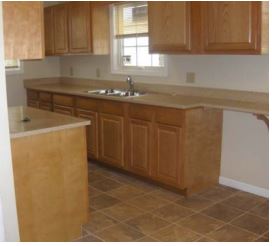 85% post-consumer recycled content. Air-Renew Gypsum Board boasts industry only technology that removes VOC’s from the air and converts them into safe inert compounds, once they are captured in the board they cannot be released into the air. This Gypsum Board also aids in the reduction of moisture and mold. On the rooftop, LandMark Solaris – Solar Reflecting Roofing Shingles were utilized. They reflect the suns rays and reduce roof temperatures up to 20%.
85% post-consumer recycled content. Air-Renew Gypsum Board boasts industry only technology that removes VOC’s from the air and converts them into safe inert compounds, once they are captured in the board they cannot be released into the air. This Gypsum Board also aids in the reduction of moisture and mold. On the rooftop, LandMark Solaris – Solar Reflecting Roofing Shingles were utilized. They reflect the suns rays and reduce roof temperatures up to 20%.

Print and Share the Project Profile – PDF
Saint-Gobain & YouthBuild Akron (Garfield House) – PDF
Indianapolis Restored Home Gets LEED Platinum & Sells Fast!
/2 Comments/in Local, Green Home Institute, Gut Rehab, Indiana, LEED Platinum, Single-Family Projects/by Brett Little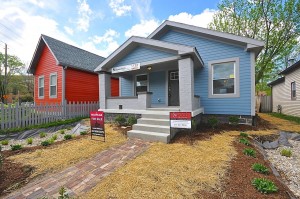 This home located on Elm St. in Indianapolis, IN was an abandoned space, built in 1910, that was bid on for redevelopment through the Southeast Neighborhood Development (SEND) organization’s Transfer and Transform program, which seeks to reinvigorate the community
This home located on Elm St. in Indianapolis, IN was an abandoned space, built in 1910, that was bid on for redevelopment through the Southeast Neighborhood Development (SEND) organization’s Transfer and Transform program, which seeks to reinvigorate the community
“William Wagnon of Green Path Homes had been looking for an opportunity to do a LEED Platinum certified redevelopment on a house that could serve as an example of green building for contractors, home owners and a city in need of sustainability.” The house on Elm presented a perfect opportunity to showcase the economic viability of a green project as well as its added health and enjoyment benefits.
No subsidies or donations were taken to help the project along. “We wanted to do it as a market-rate project so that nobody could make an excuse for not doing it. That’s the point I wanted to make,” Wagnon said.
“The house now features around $7,000 worth of insulation, putting the home’s heating efficiency well-above most standards. The floor plan was changed to allow for a contemporary living style. Raised ceilings and other space improvements provide for maximum storage in the home. A rain garden now sits at the front of the house fed by a drain pipe from the roof. The backyard deck looks out onto a single-car garage, raised planters for growing vegetables and a patch of lawn.” Additionally, 100% of installed plants were drought tolerant further reducing irrigation needs. In total, the outdoor water savings plus the water savings due to the indoor installation of highly efficient faucets, showers, and toilets etc. results in a monthly water savings of 69% based on total water use. We were able to utilize the V4 Homes Workbook: Water Reduction Calculator to derive this number. A copy of the information is attached to the project profile at the bottom of this post.
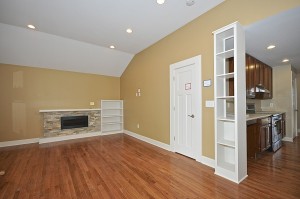 The small 960 sq ft. 2 bedroom 1 bath home is located in an area with outstanding access to community resources such as public transportation. This well sealed home uses energy efficient appliances and is expected to save 47% on energy bills. Insulated piping adds to the efficiency of this home.
The small 960 sq ft. 2 bedroom 1 bath home is located in an area with outstanding access to community resources such as public transportation. This well sealed home uses energy efficient appliances and is expected to save 47% on energy bills. Insulated piping adds to the efficiency of this home.
A central HVAC system equipped with an additional dehumidification mode adds to the health of the home along with the use of hardwood with a preference for FSC certified woods.
So much care was put into this home on Williams blog he writes … “Walter, who has does the exterior sheathing, rigid foam insulation and now the siding work is putting flashing tabs behind each butt joint on the siding. These joints will all be caulked, but it’s just a fact that caulk fails in a couple of years. But with the flashing tabs, any water that penetrates is redirected right back to the outside.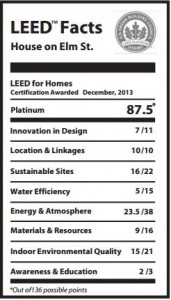
Brad nailed every shingle of the roof by hand. Yes, it takes much longer, but he knows each one is set. In building the soffit end caps, he cut fairly complex pieces so it could be 1 piece of solid wood, instead of having multiple joints that would require caulking.”
This project was the first residential home in the area to achieve the prestigious LEED Platinum certification.
News Post Featuring this Project
Green Path Home Website and Blog
South east MI home scores LEED silver and is a top energy performer
/0 Comments/in Local, LEED Silver, Michigan, Single-Family Projects/by Brett LittleThis newly constructed LEED Silver Home is located on the north side of Ann Arbor, on a 5 acre lot. The home is 4,500 square feet with 6 bedrooms, 2 ½ baths, and has a walk-out basement.
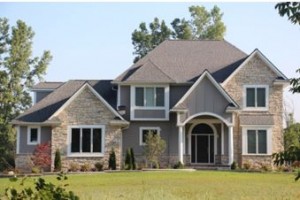 The project team wanted to build a very energy efficient, comfortable home for the family to raise their children in. Throughout the project, the team emphasized purchasing sustainable materials including adhesives and sealants with zero Volatile Organic Compounds (VOC’s) to attain a higher air quality. They worked with a HERS rater to hone in on their energy efficiency strategies. Northern Michigan Oak hardwood flooring was used throughout the first floor of the home because of its close proximity to the project. All carpeting and underlayment were Green Label Plus certified by the GreenGuard Certification Institute. Blown-in cellulose insulation, which is made up of 100% recycled newspaper fiber, was used instead of fiberglass. The fitness room boasts a 100% recycled rubber flooring and the TREX deck had a high percentage of recycled materials as well. A drought resistant turf grass mix limited irrigation requirements, as well as a wildflower mix on the perimeter of the turfed-in area. Additionally, only native species of bushes and trees were installed. The system is controlled by a RainBird Sensor that automatically adjusts the irrigation schedules if it senses rainfall.
The project team wanted to build a very energy efficient, comfortable home for the family to raise their children in. Throughout the project, the team emphasized purchasing sustainable materials including adhesives and sealants with zero Volatile Organic Compounds (VOC’s) to attain a higher air quality. They worked with a HERS rater to hone in on their energy efficiency strategies. Northern Michigan Oak hardwood flooring was used throughout the first floor of the home because of its close proximity to the project. All carpeting and underlayment were Green Label Plus certified by the GreenGuard Certification Institute. Blown-in cellulose insulation, which is made up of 100% recycled newspaper fiber, was used instead of fiberglass. The fitness room boasts a 100% recycled rubber flooring and the TREX deck had a high percentage of recycled materials as well. A drought resistant turf grass mix limited irrigation requirements, as well as a wildflower mix on the perimeter of the turfed-in area. Additionally, only native species of bushes and trees were installed. The system is controlled by a RainBird Sensor that automatically adjusts the irrigation schedules if it senses rainfall.
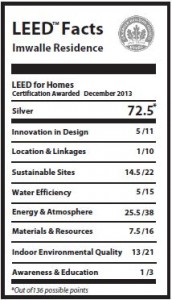 A Home Energy Rating Standard (HERS) Score of 44 was achieved for this house, which makes it in the top 10% of MI homes. The score means that the home is 56% more efficient than a conventionally built new home, and 42% more efficient than Energy Star’s standard for homes. To give you an understanding of what this equates to, the energy bill for this 4,500 sq. ft home during the month of July, was $110 for both electric and gas. The project team chose to focus on the Energy & Atmosphere and Indoor Environmental Quality (IEQ) credit areas to compensate for the sacrifice of Location & Linkages credits due to the projects distance from an urban setting. The high rating of LEED Silver was achieved by taking a whole systems design approach to building, and eliminating any weak points in the house.
A Home Energy Rating Standard (HERS) Score of 44 was achieved for this house, which makes it in the top 10% of MI homes. The score means that the home is 56% more efficient than a conventionally built new home, and 42% more efficient than Energy Star’s standard for homes. To give you an understanding of what this equates to, the energy bill for this 4,500 sq. ft home during the month of July, was $110 for both electric and gas. The project team chose to focus on the Energy & Atmosphere and Indoor Environmental Quality (IEQ) credit areas to compensate for the sacrifice of Location & Linkages credits due to the projects distance from an urban setting. The high rating of LEED Silver was achieved by taking a whole systems design approach to building, and eliminating any weak points in the house.
Central Michigan University Completes LEED Platinum Dorm
/0 Comments/in Local, LEED Platinum, Michigan, Multi-Family Projects/by Brett Little“This $28.5M project involved the construction of two new student housing buildings for Central Michigan University’s (CMU) graduate school. Hoping to emulate apartment living to attract the students who might otherwise choose to
live off-campus, each unit includes private bathrooms, kitchens and laundry facilities—with a mix of one, two and four bedroom units throughout the two structures, with 164 beds total between the two buildings.
The buildings were designed to emulate the Gothic architecture present on campus and the design and construction teams ensured that LEED sustainable features incorporated into the design were properly integrated. Large windows
were added to provide occupants with daylight in regularly occupied areas. A campus-wide green housekeeping program was implemented. Regionally manufactured materials containing recycled content were used extensively throughout the project. Equipment was selected to ensure that refrigerants would cause minimal damage to the atmosphere. Additionally, all HVAC and electrical systems were commissioned and certified that they were installed per specification and working as designed. The design also limits disruption of natural hydrology and all but eliminated pollution and contaminants from stormwater run-off. Universal design practices and sustainable design measures were integrated into the design to create an energy efficient complex recognized by its tenants as a great place to live and by the community as a model for sustainable living, earning the coveted LEED for Homes Platinum Certification.
SUSTAINABLE HIGHLIGHTS
 SUSTAINABLE SITE
SUSTAINABLE SITE
The pedestrian scale buildings support CMU’s and the City of Mount Pleasant’s mutual goal of a walkable community. The new Graduate Housing units are located on the north end of campus on Bellows Street, just steps from the Health Professions/College of Medicine building and close to Mission Street as well as downtown Mt. Pleasant.
WATER EFFICIENCY
The landscaping was designed to require 50% less irrigation, reducing the use of potable water. In addition, a 33% reduction in potable water and sewage usage was achieved by careful selection of water efficient plumbing fixtures, faucets, and flush valves.
ENERGY EFFICIENCY
The overall energy performance of a new building can not be measures until after the building has been built. Thus, the energy performance of a building must be predicted using energy analysis software. The Residential Energy Services Network has developed a set of guidelines for accessing the relative energy performance of these units. Commissioning of all HVAC, lighting and domestic water systems were conducted to ensure that all systems operate as designed. All equipment was selected to cause minimal damage to the atmosphere.
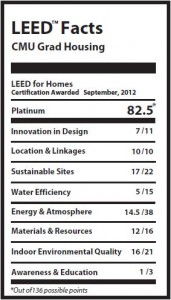
MATERIALS AND RESOURCES
During construction, 94% of all construction waste was reclaimed and recycled. Sources for the building construction materials were evaluated, recycled content materials make use of materials that would otherwise be deposited within landfills. The use of local materials support the local economy and reduce the harmful impacts of long-distance transportation.
INDOOR ENVIRONMENTAL QUALITY
An indoor air quality (IAQ) plan was implemented and low-emitting materials were selected in order to reduce any adverse effects on the IAQ once the building was occupied. The HVAC system was designed to meet the minimum IAQ requirements. No smoking is permitted within 25 feet of any air intake louvers. Low VOC (volatile organic compound) materials such as paints, carpets, sealants, adhesives, and casework were employed in order to provide a healthy indoor environment. The HVAC system was designed to maintain temperatures and humidity in accordance with ASHRAE standard 55-2007.”
The Christman Company – Builder/Contractor & Neumann / Smith Architects
USGBC certifies 50,000th LEED Homes
/0 Comments/in Local, Illinois, Indiana, Michigan, Minnesota, Ohio, Wisconsin/by Brett LittleQuoted text from ” http://www.proudgreenhome.com/article/226725/USGBC-certifies-50-000th-green-housing-unit-under-LEED-for-Homes ”
“Since its start in 2007, 50,000 housing units have been certified under LEED for Homes and 44 percent of those homes were classified as affordable housing.” “As one of the most rigorous green residential rating systems in the world, LEED for Homes is the standard against which all other such programs are measured,” said Rick Fedrizzi, president, CEO and founding chair, USGBC. “Despite its demanding technical aspects that set a high bar for green residential construction, LEED for Homes has also seen the broadest adoption among its peers — indicative of its position as the rating system of choice to guide the design and construction of healthier, high-performance homes.””
“Since the launch of the LEED for Homes rating system in 2007, the growth trajectory of the world’s most widely used residential green building program has been dramatic. From 392 housing units LEED-certified in 2007, the figure jumped to nearly 900 units certified within the year 2008 and nearly 3,000 certified within 2009. In 2012 and 2013 alone, USGBC certified more than 15,000 and 17,000 housing units, respectively.”
“Of the 50,000-plus certified units, 74 percent are within multifamily buildings, while 44 percent are classified as affordable housing. In addition, nearly 65 percent of the total units were certified in the past two years, a strong indicator of the continued momentum of the rating system. There are also more than 82,000 units under construction and in the pipeline for LEED certification.”
is excited to be apart of this movement. As an ordinal LEED for Homes provider we have certified nearly 4,000 of these homes with another 3,000 in the pipeline. Learn why LEED excites us.
“The continued growth of LEED for Homes is attributable to its many proven benefits, including enhanced property value, healthier indoor environments, and energy and water savings that average 20 to 30 percent. LEED-certified homes are third-party inspected, tested and performance-verified, offering homeowners and renters piece of mind that their places of residence are efficient, saving them money and also better for the natural environment.”
“In December 2013, USGBC also announced the LEED certification of its 20,000th commercial project.”
WI Platinum 2.5k Square foot Home averages $30 energy bills
/0 Comments/in Local, Certified Homes, Illinois, Indiana, LEED Platinum, Michigan, Minnesota, Ohio, Single-Family Projects, Wisconsin/by Brett LittleThanks to Jetson Green for sharing this awesome post! (Article written by Christine Walsh on Nov. 28, 2013)
Architect Virge Temme of Sturgeon Bay, Wisconsin recently received the LEED Platinum for Homes certification for a private residence she designed near Gills Rock. The home was built by Bay Lakes Builders, and the plans were based on the collaboration of all members of the construction and design team so as to ensure proper integration of all systems. The electric and fuel bills for this 2,600-square-foot house were less than $30 per month on average during its first year. This is only the seventh home in Wisconsin to receive the LEED Platinum certification.
The building process started with the excavation of the meadow where the house stands, while the top soil was stockpiled and used for final grading later. Once the foundation was complete, the foundation forms were stripped and the below-slab plumbing and electrical runs installed. The builders continued with laying thermal tarp to protect the home from freezing rains. This was followed by the installing of under-slab insulation. All the joints were staggered and sealed in this process to prevent air movement between layers. Furthermore, all the penetrations through insulation were foam sealed, which protects against cold seepage and potential Radon gasses.
The roof was then installed, using 16″ I-joists to reduce thermal transmission and to provide additional insulation depth. The I-joists were placed directly over the studs below and the framed walls with studs at 24″ on center to reduce redundant top plate, which also reduced the overall framing materials need. The rafters were then screwed and strapped to studs to provide additional protection from wind. All the intersections were then foam-sealed.
To provide a continuous envelope 3/8″ OSB was added to the under side of rafters. Double 2-4 plates were screwed below the rafters to provide an electrical chase, eliminating the need for roof penetrations. The builders also used ladder framing, which greatly reduced the amount of redundant materials at wall-to-wall connections. Double-wall construction also eliminated thermal bridging and provided space for additional insulation.
The house has insulation values of R-45 for walls, R-60 for the roof, and R-30 for ground insulation. Together with passive solar orientation and specially-coated windows to introduce solar warming, and which also feature overhangs to protect from summer over-heating, there is no need for a furnace or a boiler for space heating.
Other sustainable features of the home include:
– Sustainably-harvested framing materials
– Recycled/recyclable metal siding, roofing and insulation
– Drought-tolerant plants replanted around the home
– Rain gardens for roof runoff
– Only low- or no-VOC paints, adhesives and insulation were used to ensure better air quality
– Floors are made of concrete and sustainably harvested bamboo
– Only highly efficient appliances, lighting fixtures, and plumbing were installed
– The building process resulted in almost no construction waste
View LEED project Profile Here
Article tags: alternative energy, Development, energy efficiency, green building, LEED,leed certification, LEED Platinum, modern architecture, modern design, passive house, residential, water efficiency
Glenn Retreat LEED Home has Innovative Blackwater Design Feature
/0 Comments/in Local, LEED Platinum, Michigan, Single-Family Projects/by Brett LittleThe “Glenn Retreat” project exemplifies water use reduction both outdoor and indoor, with a 72% reduction in irrigation due in part by
 the AdvanTex(R) Wastewater Treatment Systems manufactured by Orenco (R) that is a environmentally sustainable wastewater treatment technology that treats blackwater and greywater so well that the treated effluent can be re-used for subsurface irrigation (We achieved a additional LEED innovation point with this system). Along with Infiltrating Rain Gardens, Edible Forest Gardens, Extensive use of Native Drought Tolerant Plants and Eco Turf Grass on the outside and with low flow WaterSense certified toilet and fixture on the inside this project achieved almost every point under Water Efficiency in the LEED for Homes checklist. Our approach to handling waste water and storm water turned a negative attribute into a positive one; and created a drought tolerant and low maintenance landscape.
the AdvanTex(R) Wastewater Treatment Systems manufactured by Orenco (R) that is a environmentally sustainable wastewater treatment technology that treats blackwater and greywater so well that the treated effluent can be re-used for subsurface irrigation (We achieved a additional LEED innovation point with this system). Along with Infiltrating Rain Gardens, Edible Forest Gardens, Extensive use of Native Drought Tolerant Plants and Eco Turf Grass on the outside and with low flow WaterSense certified toilet and fixture on the inside this project achieved almost every point under Water Efficiency in the LEED for Homes checklist. Our approach to handling waste water and storm water turned a negative attribute into a positive one; and created a drought tolerant and low maintenance landscape.
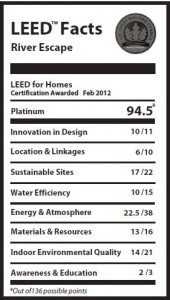
The site’s soil composition has high clay content, and coupled with a high water table makes for a less desirable building site. Fill dirt and sand were added to the center of the site to elevate the house a few feet above grade. Drain tiles and French drains were installed around the house to channel water into swales and rain gardens which we developed along the north, east and west property lines. This watering system has proven sufficient to support the wide variety of plant life added to the property. Our system eliminated the painstaking task of cleaning rain gutters too because we didn’t need to install any. The high water table also presented a challenge for the septic system. We selected an advanced system that uses a smaller drain field, and generates effluent certified by NSF International for subsurface irrigation. A native wildflower and prairie grass landscape is being developed on the septic drain field. Key Features Fabral Metal Roof (Energy Star) Exterior Construction is Advanced Framing @ 24″ o.c. 8″ of Agri based Open Cell Foam Insulation in attic. (R40) 4″ Ridged Foam Insulation under the Slab. (R-20) 3″ of Agri based Open Cell Foam Insulation on interior crawl space foundation walls. Exterior walls are Air Sealed with 5″ Cellulose Insulation (R-22) with 1″ Dow Styrofoam SIS Sheathing (R-5.5). (stops Thermal Bridging) James Hardie cement board siding. (with recycled content) MiraTec trim. (formaldehyde free, SCS Certified) 93% of Construction waste was diverted fro the landfills.
Watch a two part video series where we go into the homes and interview the homeowner and architect.
See more pictures & details on Houzz
Michigan's First Registered New Living Building & LEED Home – Burh Becc @ Beacon Springs
/0 Comments/in LEED Platinum, Michigan/by Brett Little

Beacon Springs: The Vision
Beacon Springs (Near Ann Arbor) offers hope for life springing from a sustainable dwelling, polyculture gardens amid oak savannah, and a lively gathering place. It is a beacon of hope for a happy, healthy and sustainable future for all.
Sustainable dwelling
Our house at Beacon Springs is named Burh Becc, meaning, in Old English, a dwelling by a creek. This is the origin of our family name Burbeck. Several natural springs on the north edge of the land feed a small creek which runs past the house. Wildlife is drawn to this source of water and vegetation, as were we when we first came to the site. Burh Becc has been designed as a “living building” using the Living Building Challenge standards of the International Living Future Institute (visit living-future.org). A living building becomes an alive component in a sustainable ecosystem, integrated with the natural environment in a way that nurtures and sustains that environment. It is because of this living nature of our house that we have given it a name, and we have designed and built it to serve many future generations.
Water. Our living building uses the rain and snow falling on the roof as its only source of water.
Energy. Burh Becc depends on the rays of the sun for most of its energy needs. Heat is provided mainly through passive solar design. Natural ventilation is provided by the wind drawn through the house by the tower design. Heating and cooling are augmented as needed by a photovoltaic-powered geothermal system.
Waste. Our house is designed to reduce waste products that need to be removed from the site and eliminate materials toxic to human or environmental health. 95% of the by-products normally considered waste are integrated back into the site ecosystem, or are recycled, repurposed or reused by the broader community. A 95% materials efficiency standard was also followed during the construction phase of Burh Becc, leaving only 5% for the local landfill.
Farm amid oak savannah
The farm at Beacon Springs produces food for the local community, particularly those with limited access to fresh produce, as well as for our own table. As with the house, the farm has become an integral part of the ecosystem. Following the principles of permaculture, plants, trees and animals work together for abundant and sustainable production of food. These permaculture methods also restore the fields depleted through decades of “factory farming,” they allow the garden farm to fit together with the rejuvenating oak savannah, and they encourage wise management of water for the benefit of the immediate site and neighboring ecosystems.
Gathering place
Our home has become a wonder-filled gathering place for people (and pets, too). The embrace of Beacon Springs – the living building, with its flourishing courtyard and barnyard animals, combined with the surrounding acres of permaculture gardens and oak savannah – is a balm to the lone poet and a catalyst for lively exchange in larger groups. Beacon Springs is a center of education for the community: architecture students learning about sustainable design; residential building crafts(wo)men and trades professionals learning sustainable construction methods; children learning about barnyard animals and bee-keeping; and permaculture enthusiasts participating in onsite workshops. Beacon Springs also provides a gathering spot for community farming. And we regularly welcome family, friends, co-workers and others to our table for good food and dynamic exchange of life.
A special note for our team of designers, engineers, builders and growers, and the extended team members through the International Living Future Institute: We hope that each of you, in joining the community responsible for the creation of Beacon Springs, has also received an extra measure of life springing from your contribution to the project. You are always welcome to come for a visit, enjoying with us the fruits of your labors.
—Tom and Marti Burbeck, Ann Arbor, Michigan, March 2023
Photos and Info taken from http://www.beaconsprings.org/
Tag Archive for: leed for homes
Menu
GreenHome Institute
GreenHome Institute
ATTN José Reyna
1451 Lake Drive SE, #6484
Grand Rapids, MI 49516
Tel: (616) 458-6733
Email: info@greenhomeinstitute.org
About Us
Recent Posts
- April 2024 GreenHome and Sustainability Jobs Round-Up.
- Protected: Public comment on Inflation Reduction Act Home Rebates opening in MI and beyond
- Shawn Neinhouse completed Certified GreenHome Professional Training
- Please take this MSU Student’s Mass Timber Survey
- Clean Energy Credit Union Clean Energy For All Reduces Barriers

